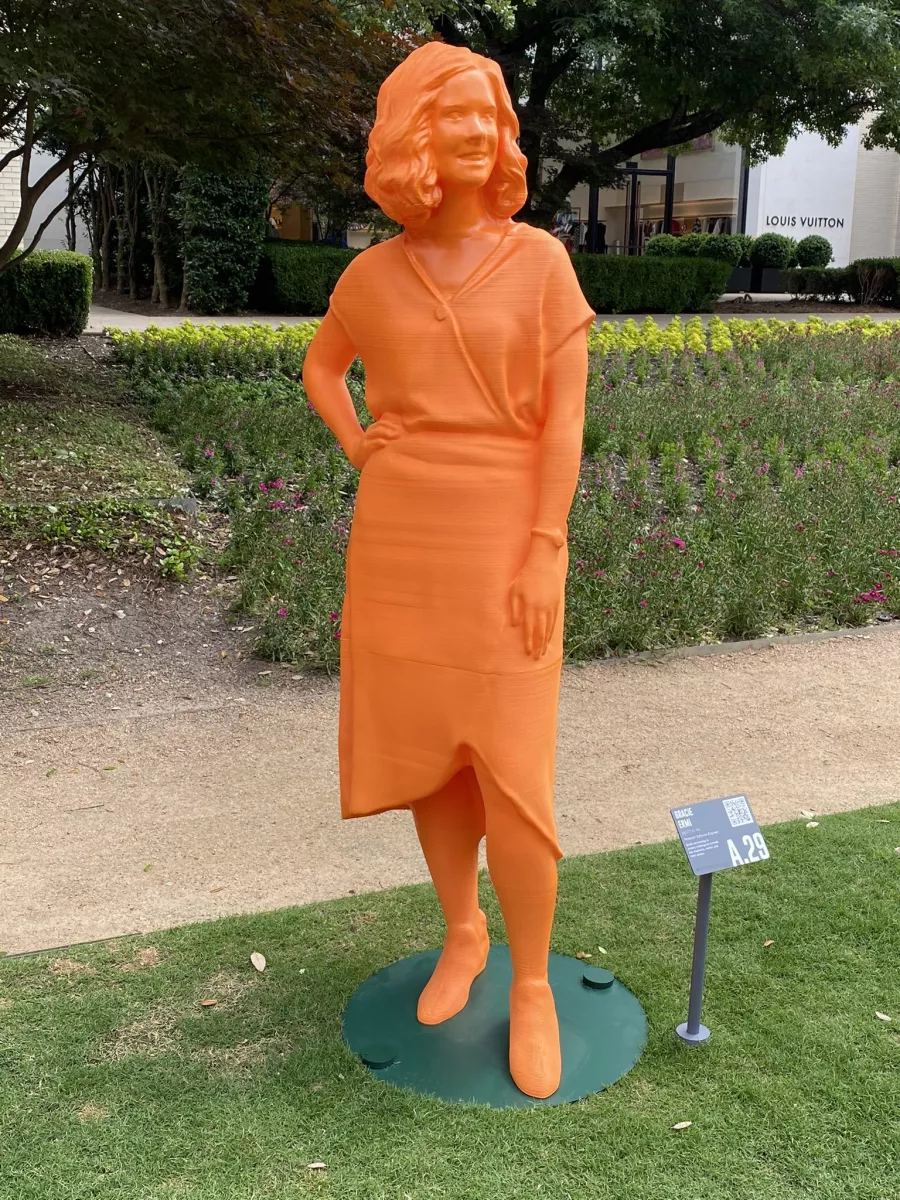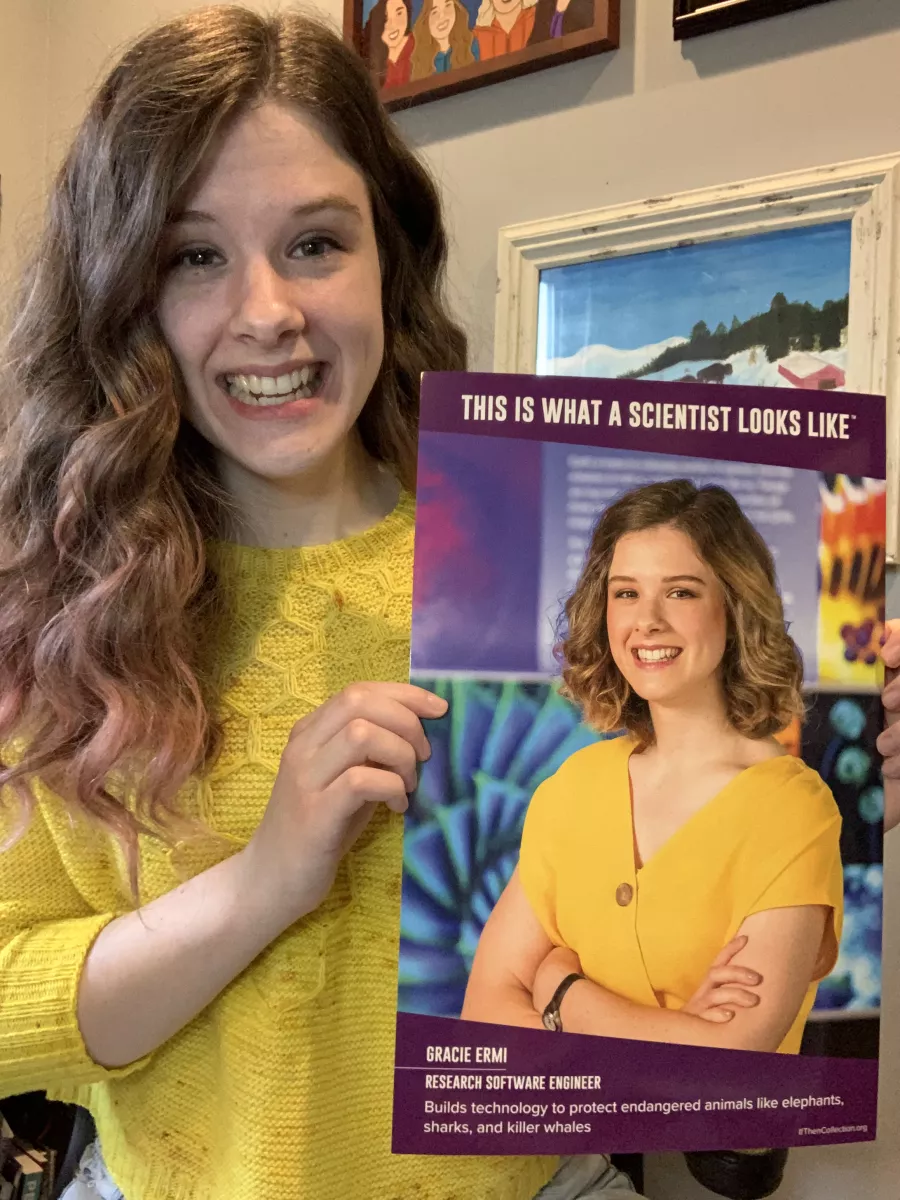Gracie Ermi, B.S.’16, M.S. ’17, has two missions: save orcas, and convince girls to try computer science.
As a research engineer at the Allen Institute for AI, she’s part of a team using artificial intelligence to help scientists speed up the processing of mountains of drone images to monitor the health of Southern Resident killer whales.
As one of 125 IF/THEN ambassadors for the American Association for the Advancement of Science, she talks about her work, and encourages girls to try it too.
It all started at Western.
Ermi grew up in Mount Vernon, and attended WWU as a CS/M Scholar, a program focused on preparing underrepresented students for careers in computer science and math. Ermi was among the first CS/M Scholars cohorts, which were open exclusively to women. The program is now open to all students interested in computer science and math, and about 70 percent of the current group of CS/M Scholars are women. In addition to women, first-generation college students and students from other underrepresented groups are encouraged to apply.
One condition of that scholarship: Ermi and the other recipients would have to take a first-year introductory seminar about computer science.
Before the class, Ermi knew she wanted to take math courses, but didn’t have a career in mind. But now she saw the possibilities for what she could do in computer science. It wasn’t just about numbers and video games.
The course work wasn’t easy. “I was definitely extremely intimidated at the beginning,” she says. “I came in with a lot of preconceived notions of my own abilities.”
She struggled with impostor syndrome: the idea that any setback she had was a sign that she didn’t have what it took to be a computer scientist. What got her though it, she says, was the support of the other women in that first class.
“Just having these friendships to lean on in these classes made a huge difference,” she says. “Without it, I don’t think I would have stuck with it.”
She also joined the Association of Women in Computing on campus, became the club’s outreach coordinator, and worked with girls doing robotics through Kulshan Middle School’s Creators and Innovators Club.
It took about two years to build up confidence as a coder. Then Associate Professor Brian Hutchinson approached her about joining his lab to do research on machine learning, a type of artificial intelligence that seeks patterns in data. When she graduated from WWU in 2016, the Computer Science Department named her its outstanding graduate for the year. She stayed on in Hutchinson’s lab for her master’s degree.
Starting in 2018, she continued her work in machine learning at Vulcan, where she started her current project helping researchers monitor the health of the endangered population of 73 Southern Resident killer whales. The whales, whose core summer habitat is the Salish Sea, are threatened by marine vessels and their noise, pollution in their food and water, and declines in their primary prey, chinook salmon.
Ermi works with scientists at Puget Sound-based non-profit SR3 (Sealife Response Rehabilitation and Research) on an automated tool to help produce almost real-time health metrics on the whales from aerial images collected by small drones.
Researchers can tell the whales apart by the unique white patches on their back and sides; no two orcas are alike. They can discern how healthy orcas are (or whether they’re pregnant) by measuring their bodies at different points over time.
But with tens of thousands of photographs, it is a long, tedious task. Ermi and her team are working on ways for computers to sort through the images and automate the measurements and identifications. So far, Ermi’s team has knocked 25 percent off the time it takes for the whale researchers to go through their data. The goal is to reduce the time from six months to six weeks. Less time analyzing images means more time to help the whales in jeopardy.
In Ermi’s other role as a science ambassador for the American Association for the Advancement of Science’s IF/THEN program highlighting women in STEM careers, talking about the project illustrates a point: Knowing how to code is useful, no matter what you are interested in.
She’s presented her work at the Grace Hopper Celebration, the world’s largest gathering of women in technology.
An orange plastic statue of her stood in Dallas’s NorthPark Center Garden from May 1 through Oct. 24, part of an installation of more than 120 statues of IF/THEN Ambassadors, different women in science, technology, engineering and math.
She’s also the November model for the 2021 “Princesses with Power Tools” calendar, which shows women in technical fields, dressed in princess costumes, and wielding the tools that they work with. She wore a pink gown and a tiara to portray Princess Peach Toadstool (a Mario Bros. character). Her power tool was a laptop.
She appears in a variety of YouTube videos talking about her work and computer science. In one video, for Camp GoldieBlox’s “Cool Tools” series, she talks about how her work with orcas demonstrates that a computer program is like a knitting pattern: It’s just a simple set of instructions.
“I want to show how STEM is in everything,” she says.

